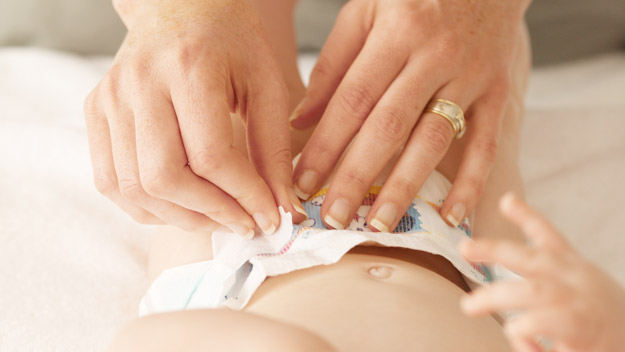What is nappy rash?
Anything from a slight redness to severely inflamed skin with sores or pustules can be diagnosed as nappy rash. It may last for a day and usually clears within ten days.
What causes it?
Nappy rash occurs when a nappy has been left on for too long, so that the urine and faeces begin to break down releasing ammonia which irritates the skin. But some babies will suffer regardless of frequent changes.
Nappy rash is also common in babies who have very frequent stools. It is also more common in bottlefed than breastfed babies and during weaning on to solids. Acute nappy rash sometimes develops in babies who are teething or when they have an infection, such as a cold. Persistent nappy rash may be caused by thrush and by antibiotics.
How can I tell if my child has nappy rash?
You may see:
Red patches or spots on the areas of his bottom that come into direct contact with his nappy
Bright red pimples that spread out from the anus
Red patches that have extended to the chest and back
Raw nappy rash in the skin creases
Redness between the skin folds
A strong fishy smell when changing his nappy
How can it be treated?
Change his nappy more frequently
Wash and dry his bottom with cotton wool and warm water, or baby lotion. If you want to use baby wipes, use ones that are hypoallergenic, unperfumed, pH balanced and alcohol-free. Then pat him dry. Be gentle but thorough
Leave him with his nappy off for at least a few minutes after each change to air-dry his skin
Use nappy cream to soothe the affected area
Stop using plastic pants, they prevent the urine evaporating and make the rash worse
To prevent nappy rash
Change soiled nappies at once.
Change wet nappies regularly – even the most absorbent disposable nappy – as it’s the bacteria and not the moisture that causes nappy rash.
Wipe and dry his bottom at each change.
Thoroughly wash and dry fabric nappies.
Check that his nappy is the right size for his weight.

